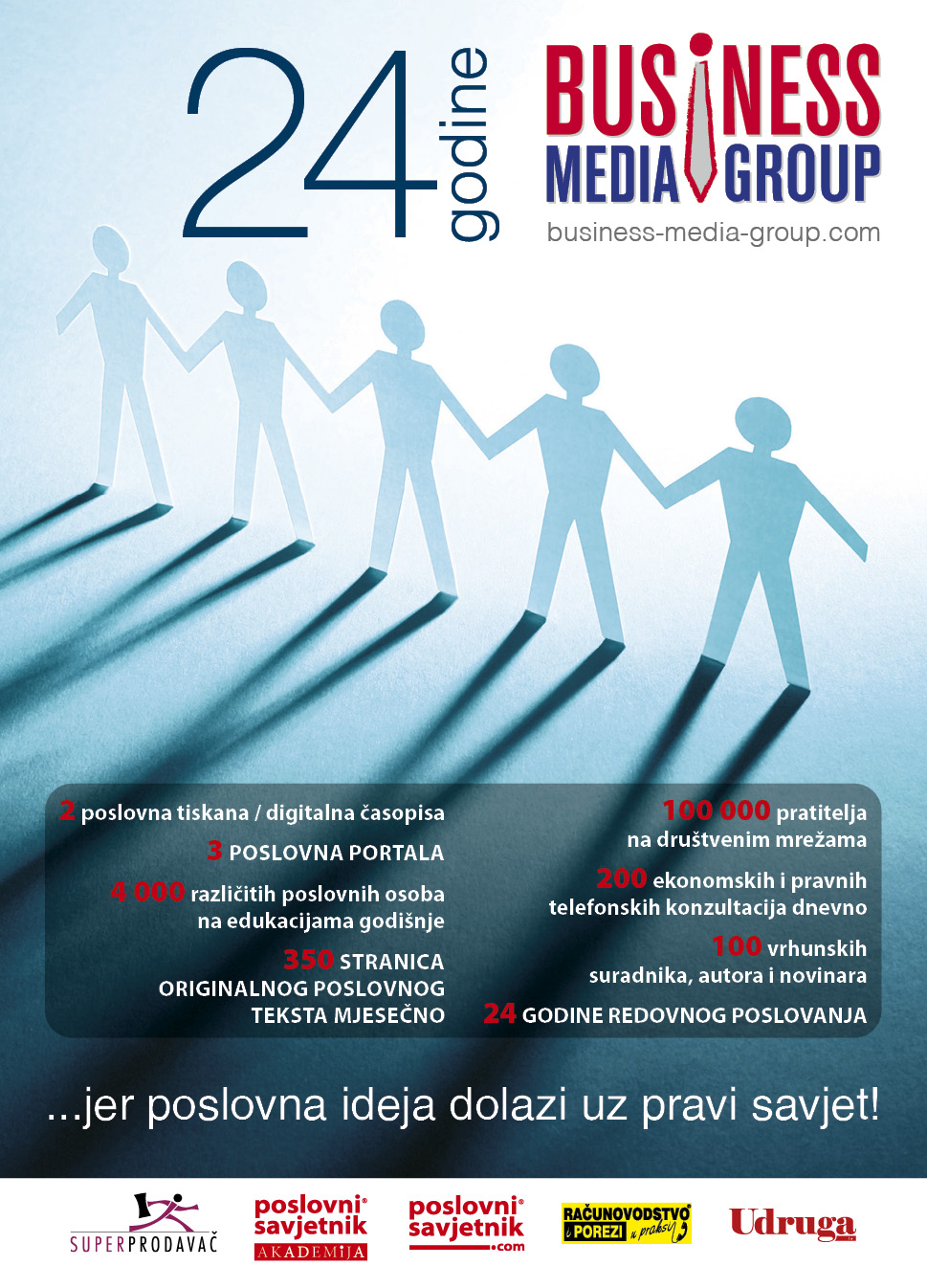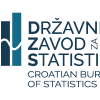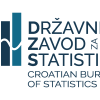John Lodder: Toxic Management Styles Should Become Accountable Leadership

My December column starts, following my heart, about missing wellbeing and peace in a toxic society and in toxic organizations. Politicians created a distance with their citizens; they caused a large loss of motivation and interest, and created fear and unhappiness in their countries. Toxic managers created ditto in their organizations with the ‘Great Resignation’ and ‘Quite Quitting’ effects as consequences.
With a few short conclusions from recent reports to show that this is a decade long development and not caused by e.g. the Pandemic and/or Putin’s invasion in Ukraine.
From there I look into some Leadership developments like: ‘What if every employee becomes a leader?’ Four leadership skills for the next five years. ‘What about authentic Leadership?’ And, to close: ‘15 ways to become a more accountable Leader in 2023’.
Cross-Border Behavior
In response to 'cross-border behavior' by managers, a lot of attention was lately paid to ‘toxic leadership’ in Dutch media. Dark personality traits, Peter Principle, a performance-oriented society, bystanders as 'yes-men', and many possible other causes were discussed. A very essential question to answer is: “What makes it so difficult for victims to escape from a toxic power relationship?”
A framework by Prof. Breevaart gives a clear insight how to approach this subject by making a distinction between “barriers” on four levels. A very brief summary as shown in Figure 1:
The first level is about the broader social context: to what extent is abusive leadership something that is "culturally accepted"? Only a few years ago scolding executives were openly applauded, fortunately, the zeitgeist has changed in the meantime, a.o. thanks to the ‘me-too movement’.
In a second level the organizational context is examined. What is the culture of an organization? Is macho behavior encouraged? Perhaps the organization is so attractive (from the outside) that as an employee you have to be 'almost crazy' to rise abuses? Finally, are there procedures through which problem behavior can be safely reported?
The third level is about the manager him/herself. I already mentioned dark personality traits such as narcissism, (subclinical) psychopathy, sadism and Machiavellianism. Numerous studies show that these can lead to toxic leadership behavior. Research also indicates that these traits can be further nurtured (development!) by the environment.
As a fourth and final layer the framework pays attention to the victim him/herself. Here too, personality traits can play a role, such as a combination of a sense of duty and conflict avoidance. Strong identification with the job and/or loyalty to the organization further complicates the denunciation of toxic leadership behavior.
Conclusion: Toxic leadership is a multi-layered problem. It is valuable to conduct the discussion from such integrative frameworks. That requires some reading and study. But combined knowledge is richer knowledge and also offers tools for solutions.
p>A global study shows that 23% of workers experience violence and harassment
More than one in five employed people worldwide -- 23% -- have experienced one or more forms of violence or harassment at work in their lives, according to a new global study.
The ILO-Lloyd’s Register Foundation-Gallup survey provides the first-ever global assessment of such experiences, asking more than 74,000 workers in 121 countries and territories about three forms of violence or harassment: physical, psychological and sexual.
In addition to measuring the incidence of each type of violence or harassment, the study provides vital information on who is most likely to experience it. Given that workplace violence and harassment frequently go unreported, the survey also asked self-reported victims of this abuse whether they had reported their experiences and about the reasons they may not have done so.
Workplace violence and harassment are widespread around the world.
The 23% of employed adults who had experienced at least one form of violence and harassment translates to nearly 750 million workers worldwide. Those who had experienced each of the three main forms of violence and harassment also number in the hundreds of millions:
-Psychological violence and harassment -- including insults, threats, bullying or intimidation -- was the most commonly reported form among men and women. Globally, 18% of employed people, representing almost 590 million workers, said they had experienced it in their working lives.
-Almost one in 10 workers worldwide (9% or nearly 280 million) said they had experienced physical violence and harassment, such as hitting, restraining or spitting.
-Women were more likely than men to report experiencing sexual violence and harassment, such as unwanted sexual touching, comments, pictures, emails or requests. Overall, 6% of employed people (more than 200 million) had experienced sexual violence and harassment, including 8% of women and 5% of men. See Figure 2:
Figure 2 – Personal experienced violence and/or harassment at work.
For most people who have faced workplace violence and harassment, it was not an isolated incident: At the global level, 61% of self-reported victims said they had experienced it three or more times during their working lives.
And many people who experience one form of workplace violence and harassment may also be vulnerable to others. Among those who had experienced any of the three forms in their lifetime 32% said they had faced more than one form, and 6% had experienced all three.
Certain demographic groups, like young women, are particularly at risk for experiencing workplace violence and harassment.
Overall, 18% of employed people said they had experienced some form of violence and harassment in the past five years, but this figure rises to 23% of workers aged 15 to 24. Young women are particularly vulnerable to sexual violence and harassment: 9% said they had faced it in the past five years, compared with 4% of young men.
Almost half of workplace violence and harassment victims never told anyone about their experience.
Among those who have faced violence and harassment in their working lives, 54% worldwide said they had told someone about the experience, with women more likely than men to have done so (61% versus 50%, respectively).
Among those who said they had not shared their experiences of workplace violence and harassment, the most common reason for not doing so, cited by 55%, was that they believed telling someone about it would have been a waste of time.
However, at least one-third cited each of the seven reasons tested, with 45% saying they feared for their reputation and 43% reporting procedures at work were unclear as seen in Figure 3.
Figure 3 – For which reason did you not tell anybody about your experience.
Workplace violence and harassment cause untold harm to individuals’ wellbeing and undermine the productivity of businesses and organizations around the world.
The results from this groundbreaking study shed new light on the incidence of different forms of violence and harassment at the global and regional levels, and highlight the importance of the ILO’s 2019 Violence and Harassment Convention, C190, which calls for participating nations to “respect, promote and realize the right of everyone to a world of work free from violence and harassment.”
The high percentage of self-reported victims who say they never reported their experiences with violence and harassment, as well as their most common reasons for not doing so, also underscore C190’s call to establish strong legal prohibitions and workplace policies to combat violence and harassment, ensure access to support for victims, and raise awareness about the issue through education and training.
This research can help inform strategies for achieving these goals and upholding workers’ right to a healthy and safe working environment.
In the USA it hasn’t been a year with much news to celebrate
I only mention 4 of 10 to give you an idea:
-Confidence in the U.S. Institutions went down with the average at a New Low,
-Another Record-Low: only 38% of Americans feel extremely Proud to Be American,
-Americans are less optimistic about the next generation’s Future,
-Confidence in media and media ratings are at Record Lows.
Globally Unhappiness has been increasing for more than a decade
Figure 4 (by Gallup) shows the rise of Unhappiness that has been missed by almost every world leader. That's because leaders pay close attention to measures like GDP or unemployment, almost none of them track their citizens' wellbeing.
The implications of this blind spot are significant and far-reaching; leaders missed their citizens’ unhappiness that triggered events ranging from the Arab uprisings to Brexit to the election of Donald Trump.
Figure 4 – The global rise of unhappiness.
What about Croatia?
This is the third big and representative annual survey by Val group Zagreb on the attitudes, beliefs, fears, and expectations of Croatian citizens. I present just a few highlights.
This year, citizens' trust has clearly been lost in all areas of society. The media, state institutions, non-governmental organizations, and local governments enjoy it the least. It’s evident that we are in a time of permanent crisis, constant and major changes that are changing citizens' attitudes and behaviors faster than ever.
We are witnessing less and less loyalty towards products and services, fewer expectations for companies that they can solve the "real" problems we face, and less and less trust that what they communicate is true and relevant to their everyday life.
Although it is still important, all this leads to citizens today caring less about the values, attitudes, and socially responsible business of those whose brands they use.
The survey confirms that, in addition to the public sector, the media and non-governmental organizations, the business sector also has a lot of work to do if it wants to enjoy the reputation of those who work for the welfare of society. Despite all challenges, companies have a great opportunity to change in the time ahead.
In line with citizens' distrust of the institutions that lead the country, almost 70 percent of citizens (69.9%) believe that Croatia is going in the wrong direction, with young people being more pessimistic than older citizens.
An overview in this index, which is expressed on a scale from -/- 100 (all respondents think it will be much worse) to 100 (all respondents think it will be much better):
Optimism Index
2022 2021
Personal financial situation 3.3 12.7
Health - 5.3 -1.8
Business status and career 15.4 17.7
Relationship with friends 11.0 10.7
Love/emotional relationship 16.4 15.4
Family relationships 12.6 14.0
Political situation in the country -32.8 -19.0
Economic situation in the country -32.2 -21.3
Consumers are not ‘loyal customers’ because they don’t feel respected and heard by companies.
Due to the focus on price, citizens are less loyal to brands than before, which creates a need for a better and more specific communication and brand loyalty should be earned.
What values and messages are consumers looking for from brands?
Consumers most want advertisements to communicate reliability (32.1%), trust (28.8%), safety (28.7%), responsibility (26.5%) and positivity (20.2%).
To a slightly lesser extent, they want them to communicate sustainability (19.6%), optimism (18.4%), normalcy and ordinariness (11.6%) and freedom (11.5%).
Citizens have a greater satisfaction and trust in private healthcare:
Private healthcare services Public health services
SATISFIED 46.4% 26.8%
DISSATISFIED 13.9% 40.6%
What are the most important concerns and fears of Croatian citizens?
Citizens are most concerned about further price increases and lower quality standards.
Almost 60% of students believe their personal consumption will increase in the coming year, while 40.6% of the employed and 37.2% of the unemployed expect this.
-39.2% of pensioners and a third of unemployed respondents, that is, people who are having the lowest incomes, think they will reduce their personal consumption in the next year.
-56.6% (more than every second) of citizens worry about war conflict in which Croatia would be directly involved.
-72.2% are worried or very worried about the spread of war conflict in the world in general, without direct Croatian involvement.
-A total of 58.7% of citizens state that the fear of inflation would negatively influence their decision to buy an apartment, and slightly less 44.9% of citizen’s state that they fear losing their job.
-84.1% of consumers believe that companies should primarily care about the health and safety of their employees.
-A total of 86.9% of respondents believe that companies should invest additionally in the development, knowledge and competencies of their employees.
-77.9% of citizens believe that companies should enable employees to work flexibly, for example, work from home and with adjusted working hours.
The Great Resignation has been quite clear
The people quitting in droves haven’t done so because their company’s top executive is insufficiently visionary or not inspirational. So why did they leave?
Many millions of people left their jobs because of the toxic cultures they just needed to escape from for different reasons as described above. Other reasons for millions to leave were a.o.:
People (who are actually Humans!) quit their lousy jobs because of:
-Lack autonomy, variety, or opportunities to grow;
-Pay poorly and don’t reward performance fairly;
-Aren’t clearly defined and structured;
-Lack guardrails that prevent chronic overload and frustration;
-Did not receive recognition and / or appreciation for their efforts.
And they quit their:
-Direct bosses, whose lack of everyday managerial competence, trustworthiness, inclusiveness, and care are no longer tolerable.
-Organizations that have breached their psychological contracts with employees by violating the unwritten rules of trust, fairness, and justice.
It can be hard to move away from the status quo, but as the saying goes:
If you always do what you’ve always done, you’ll always get what you’ve always got’’.
Personally I find it heartbreaking to see the cruelty politicians in most countries and managers and their HRM’s in most organizations have been doing respectively lacked to do and still are doing to humans, to their (!) employees, their (!) people.
With every industry and sector facing massive – constant - changes, it’s clear that management must change and organizations must break away from the status quo and find new opportunities.
As companies are experiencing turbulent times, that will increase the need to transform their Leadership styles and their HRM quality and integrity.
Fortunately there are more and more examples of great companies to work for, a growing number of companies that are experimenting and putting their people first.
Here are some recent new approaches coming from successful practices.
The transformational benefits of treating every employee as a leader
It’s a paradigm shift with concrete results, including greater retention and happier teams, says Livia Martini, Chief People Officer at Gympass.
When I first told the staff at my company that we consider every employee a “leader,” I made an Oprah joke. “You’re a leader! You’re a leader! Everyone’s a leader!”
After all, it sounds to some people like impossibility. How can all of our 1,600 team members be leaders? When I tell people outside the company about this, some think it sounds like we’re watering down the idea of what it means to lead. But this system has profound benefits. It has helped us keep top talent throughout the pandemic and the “Great Resignation.”
We’re not alone! A study from the O.C. Tanner Institute found that organizations “that treat every employee as a leader create the best leaders —and the best cultures.” These companies have higher scores across 10 different metrics, such as engagement, inclusion, and employee experience. Burnout levels dropped.
Why does this happen? Because it delivers a fundamental shift that gives people “greater autonomy and opportunity” and broadens development opportunities, the report explains.
Encouraging Innovation and Risk Taking
To make this system work, you need to establish what leadership means in the organization. At Gympass, we make clear that leaders have the responsibility and accountability to make decisions. Not only do they have permission to create new projects and try out new ideas within their scope, they are expected to do so!
Across my career, I’ve often seen fear hold back innovation. People are afraid that their idea might fail, that they’ll come across as “rocking the boat” unnecessarily, or that they’re overstepping their bounds. They think that if they simply do things the way everyone else is doing them, they’ll avoid all these problems. So, when they get an idea, they either don’t speak up or they ask their managers to sign off on it first. In these companies, managers often then ask their higher ups, and so on, until ideas just fall through the cracks.
When you establish that everyone is a leader, employees are more willing to take risks. It becomes an everyday norm. Along with this innovation comes accountability for results. Employees need to pay close attention to the consequences of their choices, correct what goes wrong, and keep looking for ways to refine and improve. Numerous employees have told me that by calling them all leaders, we have empowered them to experiment with changes.
For example, one team member in talent acquisition saw that we were having trouble hiring a certain profile of candidate. They changed the questions they were asking in the recruiting process. The change worked. This employee ended up training others to make similar changes.
Similarly, junior recruiters tried changing the types of tests we give different candidates and the stages at which candidates take those tests. The recruiters then came together, discussed what worked well and put changes into action across the board. It may sound unusual, but rather than creating mass confusion, it allowed simultaneous experimenting to determine what works better.
The result was a faster, more successful hiring cycle.
This freedom is a big part of what helped us successfully. A staff full of people unafraid to take the lead in trying new things delivered new solutions.
A broader Leadership model
We also tell our staff that being a leader means more than just creating new ideas and projects and seeing them through. We have a leadership model with three pillars that we apply to all employees:
-Build trust
-Inspire and empower others
-Drive performance
In career conversations and performance reviews, we speak with each employee about these pillars, and look for them to demonstrate actions in keeping with each category. What have they done recently to build trust with fellow employees and/or customers? How have they inspired or empowered colleagues?
How have they affected organizational growth?
We include these pillars in the hiring process as well, asking candidates about moments in which they demonstrated these abilities. When conducting reference checks, we ask about them as well.
The first two pillars in particular serve as powerful reminders that leaders are not “lone wolves.”
All our team members must be collaborative, helping each other achieve goals while also giving each other the space to accomplish their tasks in their own ways.
The Talent pipeline
Establishing that everyone is a leader also helps to ensure that there are plenty of terrific, capable internal candidates for promotions to management positions.
Promoting internally is often better than hiring from the outside. Internal candidates have organizational knowledge and relationships. Promoting them increases longevity at the company overall, while rejected internal candidates are likely to leave.
Yet in one study, 40% of managers were nevertheless hired from the outside. Such a high figure suggests too many companies are failing to build enough internal talent.
When you establish that everyone is a leader, you make sure that all employees are getting some form of leadership experience, for example, running meetings or overseeing a cross-functional project, which helps them build those skills.
Through internal surveys, we’ve seen the results of this system. Employees express a greater sense of purpose and connection to the company. More people than ever say they work in a place that genuinely cares about people. So, while we may not be giving everyone a free car we can see that extending our vision of leadership has provided its own rewards.
There’s a new way to lead - Do you have what it takes?
Organizations are only as successful as their leaders.
Research shows that not many leaders are clear about what tomorrows’ necessary skills are, particularly in today’s turbulent environment.
PA Consulting’s report, based on a survey of 300 business leaders in Europe, UK and USA, reveals four key leadership behaviors. These will not only make a tangible difference to the health and happiness of your organization, but also its performance.
The report examines four leadership behaviors that will be critical to success over the next five years and highlights some fascinating differences in leadership.
For example, there is a clear dichotomy between leaders who identify as an “innovator” (56%) and those who identify as a “survivor” (44%). The first group indicates that they can focus on acceleration, transformation and investments in growth and innovation, while the focus for survivors is on cost reduction and maintaining the pace of change.
More than two-thirds (69%) of all leaders say they urgently need to refine their leadership approach, and nearly three-quarters (70%) say a more transparent, results-oriented approach would enable them to perform better over the next two years.
Four Critical Leadership Behaviors
The vast majority of leaders in the survey recognize the behaviors below as essential leadership qualities – now and in the near future. They believe that the behaviors can lead to better social outcomes (74%) and yield better performance (70%).
Stimulate human optimism
Positive, happy employees are about 12 percent more productive.
By nurturing optimism, leaders can stimulate innovation and creativity.
Enabling teams to innovate
Many companies continue to focus on targets and tasks, rather than underlying goals and results.
The role of leadership is to enable new ways of thinking.
By enthusing teams and giving them the space and freedom to innovate, you stimulate ingenuity.
Create agile environments
Rapid change is the norm these days. By stimulating agility, inclusiveness and flexibility, you create teams that are able to realize rapid changes.
The best leaders are curious, open to new ideas and encourage an experimental mindset within the organization.
Finding inspiration in surprising places
New leadership requires the ability to look beyond one's own sector for new ideas.
By looking for new ways to use existing technologies, applying new skills to old problems or looking at start-ups and disruptors, new perspectives and opportunities arise.
New leadership looks at the common good
The research shows that there are concrete ways to lead with the aim of making a tangible difference.
Yet 30 percent of leaders say they are unwilling to change their leadership style if it is necessary for the greater good.
However, business leaders who fail to understand or practice the importance of changing behaviors risk becoming irrelevant and ineffective. "The world is changing fast. As a business leader you have to keep up. You cannot afford not to respond to the new reality within organizations.
For example, there is a great need for new leadership that focuses on wanting to do the right thing.
So with a greater focus on sustainability, social impact and putting people first, rather than a short-term focus on business results. The research underlines this development and emphasizes that the time has come to change mindset, especially in these times of uncertainty." (Mark Griep, head of PA Consulting Netherlands).
Authentic leadership
Bringing your true self to the job is one the best things you can do for the success of your business.
As a leader you set the tone for everything that happens in your business. And it’s getting harder and harder for organizations to hide behind values that sound nice but don’t translate into action.
A new generation of clued-up consumers are increasingly looking at what companies really stand for, extending through to viral social media campaigns that target organizations for espousing platitudes rather than concrete purpose.
Providing an excellent product or service is always going to be crucial. But doing that at the expense of the bigger picture, sustainability, social inclusion, diversity, isn’t enough for the long-term.
A new report on leadership shows that powerful leadership means living up to purpose, even when it gets tough. We found that it’s worse to have a non-authentic purpose than no purpose at all.
More than two thirds of leaders (71%) told us that their purpose creates a unifying sense of optimism and creativity. Leading with purpose means setting the course and be willing to follow it. Here’s how to do it:
Show up as yourself – with you own VOICE
The new way to lead is based on a level of openness and honesty and integrity, showing up as yourself at work gives others permission to do the same. And the COVID-19 pandemic has only accelerated this process. For the first time, many leaders had to rally their people while working remotely, in doing so revealing more of who they are than in the past.
Being authentic means being consistent, in the big decisions and in the details too. That could be anything from dialing back the corporate jargon to including stories, not just data, to inspire in your communications.
This can be done with a focus on five dimensions in every leader’s team: Valued, Open, Independent, Connected and Empowered.
This ‘VOICE model’ calls for a greater level of vulnerability. Admitting if something’s gone wrong and letting people know what you’ll do to put it right. Showing others it’s okay to be human to make mistakes.
This kind of courage sets the scene for healthier, more innovative organizations.
Understand your own purpose
The better you understand what drives you, the easier it is to connect with and inspire others.
Your own mission doesn’t have to be an exact match for the organization you lead, but ideally it’ll run in parallel in some important ways.
If you’re not fully committed, people will see it. Author and speaker Simon Sinek helpfully points out the difference between high energy and high charisma: energy excites, but charisma inspires.
And charisma comes from believing in what you’re doing. There’s no shortcut or presentation skills hack to this: you’ve got to get clear on what matters to you.
Take brave decisions, not just the easy ones
There are times when it’s easy to be authentic: when mission and profits are aligned, it’s a no-brainer to make good choices. But what do you do when it gets tough? Are you willing to lose out on opportunities if they’re not the right fit? Are you set up to invest for the long-term good, not just the short-term gains?
And are you willing to ensure you don’t compromise your purpose and values for financial gain?
Authentic behavior is being congruent with your words that fits with what and who you are.
At the same time you have to take the context into account and the expectations of others. It’s about your behavior in which is no place for ‘tricks’. Some leaders escape in nice plans for the future - that is a trick.
Authentic leaders look at the real, actual situation and act from there, with an open visor, space for criticism, exchange of feelings, ideas and concepts, space for exchange, listening and discussion.
The real authentic leader creates a trusted and inspired team using open and direct communication and exchanges so they all know what lives in his organization.
15 Ways to be a more accountable Leader in 2023.
In his book Accountable Leaders, Dr. Vince Molinaro shared the core idea that accountability ultimately differentiates great leaders from mediocre ones. Accountable leaders act like a water ripple in a pond.
Their actions inspire others to step up. You see, accountability breeds accountability.
But guess what, it works the other way as well: mediocrity can breed mediocrity.
As you look at the challenges and opportunities that wait in the New Year, I encourage you to make leadership accountability a priority.
Here are 15 ways to inspire you:
1.Set the tone. As a leader, you cannot demand anyone else be accountable unless you are first accountable. It starts with you. Have clear sense of purpose to lead effectively in challenging times. It helps motivate you when the going gets tough. Ask yourself, how will I create enduring value for my customers, employees and key stakeholders?
2.Look externally. When the pressure is high, many leaders can become heads down and internally focused. Guard against this. Learn to navigate uncertainty by regularly looking externally to spot opportunities, identify threats and anticipate risks.
3.Create clarity. Accountable leaders focus their energy on creating strategic clarity. They help their teams prioritize what is essential, which reduces confusion and establishes accountability for results.
4.Demonstrate optimism. In times of adversity, people look to their leaders for a sense of hope and direction. Bringing positive energy and genuine enthusiasm to the teams you lead is important.
5.Define expectations. Accountable leaders take to identify and communicate the behavioral expectations they have of their team. They also call out misaligned behaviors when they surface. Ask yourself, what are the five or six key behaviors that you and your team must live up to?
6.Invest in relationships. Strong relationships lead to better teamwork and business outcomes.
So take the time to get to know your colleagues and actively repair strained relationships.
What relationships will be critical to your success in 2023?
7.Tackle the tough stuff head-on. Accountable leaders demonstrate the resolve to address challenging and difficult issues. Whether it is managing a poor performer, giving candid feedback to a peer, or making a tough decision, do not shy away from leadership’s hard work.
8.Support the team. Accountable leaders continually monitor the workload and stress levels of their teams. They show compassion and provide emotional support in times of adversity.
They also look for ways to help their colleagues be successful. They are not bystanders.
Actively reach out to act as a sounding board or offer resources to help during crunch times.
Ask yourself: Who needs my support right now?
9.Use recognition to inspire confidence. Regularly acknowledge the contributions of your teams and find ways to celebrate important milestones.
These actions serve to increase engagement and personal commitment.
10.Ask for feedback. When was the last time you asked for honest and meaningful feedback?
When you do, you send a powerful message to your team. The feedback will help you confirm your leadership strengths. It also helps uncover blind spots that may be getting in your way.
11.Bring a one-company mindset. Accountable leaders bring a company-wide perspective to everything they do, even if they lead a team, function or department. They work to break down silos so that innovation and collaboration can flourish. Part of this is continually putting what is best for their organization ahead of what is best for them.
This serves to inspire the people they lead and helps minimize unhealthy politics or distractions.
12.Build a sense of community. Accountable leaders find ways to unify and bring people together, rather than create division. They focus on creating cohesion, alignment and a sense of camaraderie, all of which are critical now as many are working virtually and may be feeling isolated and disconnected.
13.Cultivate credibility. If you want to get anything done in organizations today, you will need strong credibility. Sure, you can rely on your position, title or power as a leader, but these only get you so far. Deliberately take time to build credibility at a personal and team level by being transparent.
14.Be a good follower. A leader who is a lousy follower is as much of a liability as one who is mediocre and unaccountable. Accountable leaders know when to take the lead and when you need to support others when they are leading. Are you a good follower?
15.Practice humility. Leaders who possess a healthy dose of humility are inspiring.
They have no problem asking for help or giving credit to someone else’s idea. They admit when they do not know something and can laugh at their shortcomings. They also apologize when they make a mistake. Leadership is hard work, and you will not be perfect. So, if you have a misstep or an outright failure, do not react or get defensive. Instead, own it. Learn from the experience and move on. You will set a powerful example for others.
Becoming a truly accountable leader requires a deep sense of commitment. You don’t get there overnight. It is a constant journey asking you to evaluate your progress and recommit to stepping up every single day.
I like to thank every reader and hope you get some inspiration and / or a good idea out of this column. Anyways, I wish you a beautiful, successful and healthy 2023 and hope you pick up the Leadership Style that fits you and your people the best.
For this column I was inspired by, and for that I like to thank them all: Dr. Bart Wille, Gallup - USA, Val Group - Zagreb, Steve Crabtree, Livia de Bastos Martini, PA-Consulting – London, Grete Kvernland-Berg, Dr. Vince Molinaro.
John Lodder M.A., MSc.
ps/smm




























